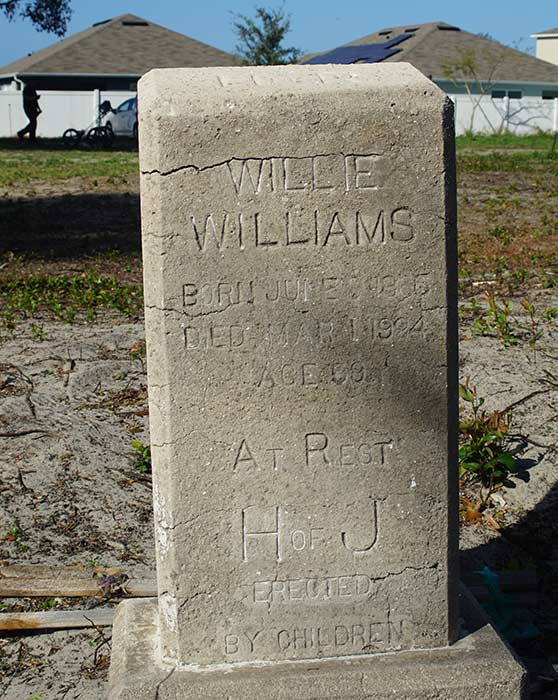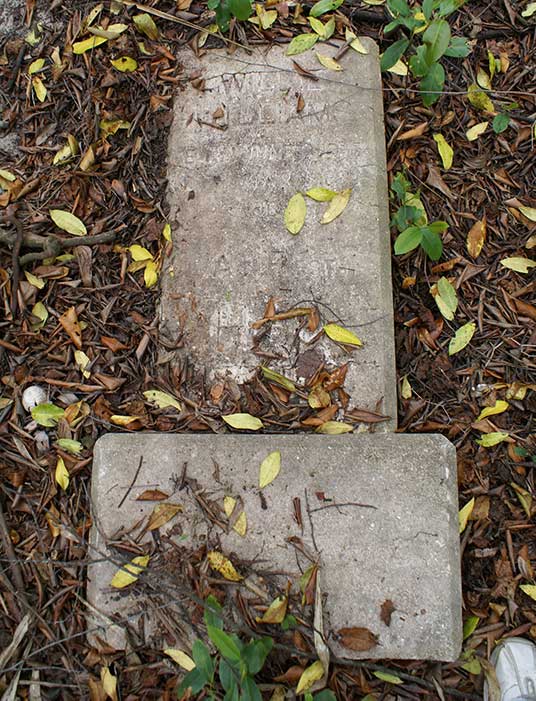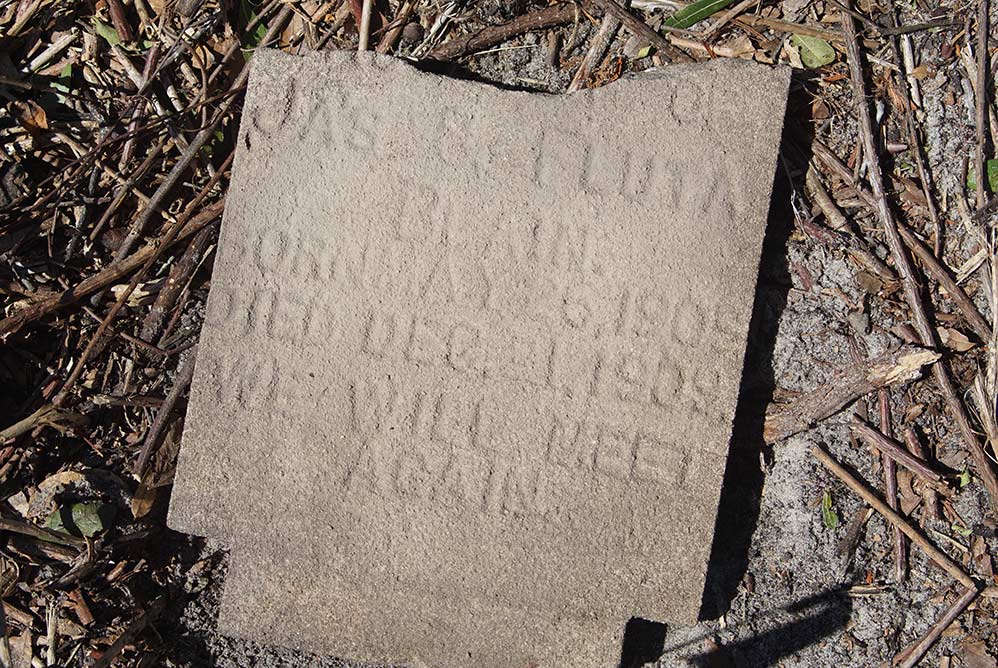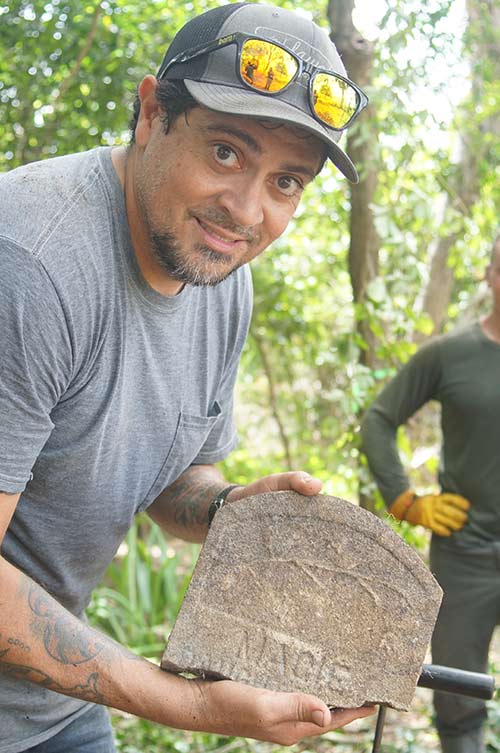by Linda Charlton
There are more than 200 people buried in Groveland’s first black cemetery, substantially abandoned for about 80 years. Currently under restoration, the cemetery is known as Oak Tree Union Colored Cemetery of Taylorville.* All of the dead at Oak Tree have stories to tell, but in most cases, there’s no one left to tell the stories. Sometimes, however, written records and actual tombstones can tell a story.

WILLIE WILLIAMS
Willie Williams was born on the cusp of history at a time and place when the fabric of daily life was ripped apart and the normal functions of government had ceased to exist. But she was born free. Her birth date, duly inscribed on her tombstone, is 10 June 1865, one month after the fighting had ended in her native Georgia, one week before Juneteenth, and roughly two weeks before Georgia was organized into military districts for the purpose of Reconstruction. If alive she would turn 158 on Saturday. She died a widow on 1 March 1924. She was a midwife, a laundress, and a Heroine of Jericho (similar to Eastern Star). Realistically that means that her husband was a mason and that both man and wife took seriously the idea of being stewards of the community. She’s also the only woman buried at Oak Tree in a marked grave.

EMMA GADSON
Emma Sullivan was five years old when her grandma, Emma Gadson, died. That was 1942, when the community’s old and current black cemeteries were both in use. Gadson went to the ‘old’ cemetery. Sullivan remembers that her grandmother could walk into Edge Mercantile Store and pick out anything she wanted, for Gadson had been Edge’s nurse as a baby, and remained an important part of the businessman’s life. Sullivan also remembers that after her grandma died, Edge had her embalmed. So Emma Gadson had a wake and a funeral. In all likelihood the funeral was standing room only, for available death records paint Gadson as the community’s ‘grandmother,’ the one who stayed with people and looked after them when they were sick and/or dying and did not have any kin to comfort them.
Gadson’s grave is unmarked. She may or may not be buried next to her husband Israil, who was buried at Oak Tree in 1917. His birth year of 1853 paints him as one of the handful of people in the cemetery who were born enslaved.
VIOLA BRODUS
Viola Brodus is unique in Oak Tree, for the location of her unmarked grave is known. That’s because her son, Cornelius Brodus (now deceased), knew exactly where his ma was buried back in 1938. She was right by WWI veteran Joe Green, in a plot marked with lilies and surrounded by a tiny wooden fence. The fence is gone, but the lilies remain. Reflecting on the first time she saw Viola’s grave site, granddaughter Donna Brodus Forest says “She had unrelenting faith, and we saw that lily. It was symbolic of how strong a woman she was.”
Donna never met Grandma Viola, but says she feels she knows her from all the stories her dad would tell. The children in the household did go to school, but Viola took their educations a few steps farther. She would sit them down and work on school assignments with them and talk about current events. The woman pushed education — that and a strong work ethic. That ‘work ethic’ certainly worked out, for Cornelius left Groveland, headed north, and ended up owning a successful trucking company. When he returned to the area in the 1970s he opened up the wildly successful Brodus Barbeque. Donna Brodus Forest has since reopened and rebranded the restaurant as Donna’s Real Pit Barbeque.

MACIA BLAIN
Though Willie Williams is the only woman in Oak Tree with a marked grave, there was one other female who was at one point in a marked grave. The tombstone is no longer attached to the grave, but the little girl is definitely in Oak Tree, presumably in the area sometimes referred to as the ‘children’s corner.’ Baby Blain was for years known as having the oldest marked grave in the cemetery/ The child died in 1909 at age four, at a time when many dead infants and young children were buried at home. Some months back members of the restoration team discovered the missing top half of the child’s tombstone. The sweetheart of Oak Tree is Macie Blain, beloved daughter of James and Fluta Blain, who marked her stone “we will meet again.”
Macie’s tombstone is now intact and in a safe place.
*Groveland was Taylorville before it became Groveland. The earliest written record of any black church in the area was of Oak Hill Union Colored Church of Taylorville. The “Union” indicates that Baptists and Methodists worshipped together. The Oak Tree comes from the giant oak tree (since fallen) that was the landmark by which community members could tell where the cemetery was located.






